The Gift of Clean Water for Sri Lanka
By Hu Yifeng
[Sri Lanka] Dr. S. K. Weragoda
Since the 1990s, a chronic kidney disease of unknown origin has become endemic in Sri Lanka, especially in the arid north-central regions, with an incidence as high as 15 percent.
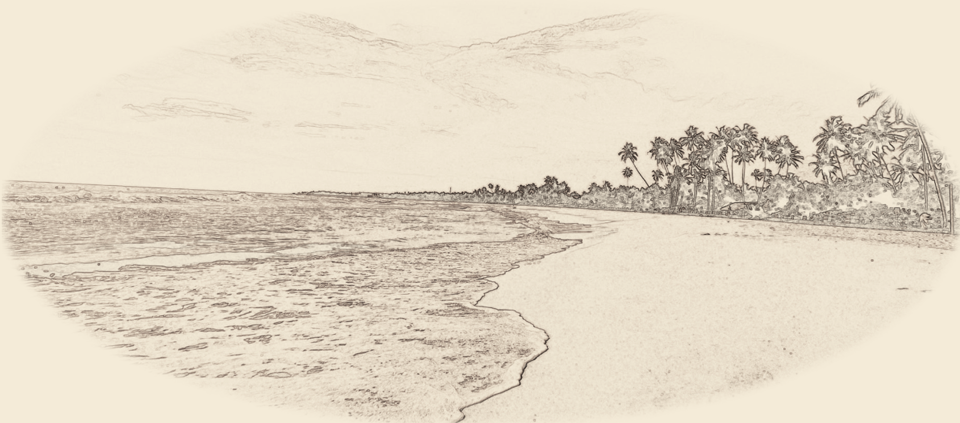
According to the World Health Organization, a key way to reduce the incidence of the disease is by providing clean and safe drinking water.
Experts from the Chinese Academy of Sciences, Chinese nephrologists and Chinese water resources management companies started an initiative in Sri Lanka to safeguard the health of the people by providing safe drinking water and helping research on the disease. This is the story of their initiative.
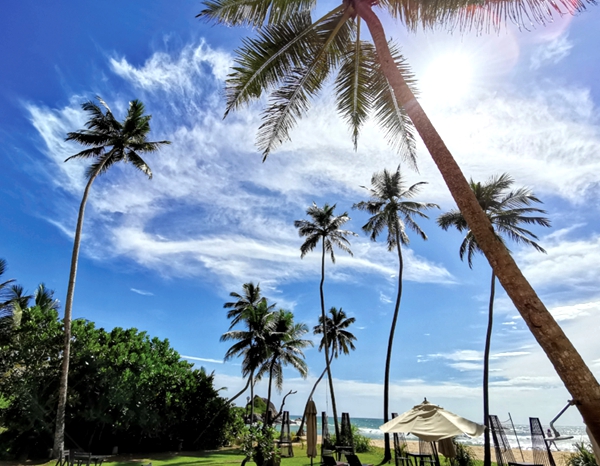
A Sri Lankan beach resort
Joint Research to Tackle the Problem
CKDu (chronic kidney disease of unknown etiology), which caused the death of more than 20,000 people in Central America in just 10 years, has now become a global problem. Hard-hit by the disease, Sri Lanka sought international assistance to tackle the problem.
Dr. S. K. Weragoda, chief engineer of Sri Lanka’s National Water Supply and Drainage Board, wrote to Wei Yuansong, a researcher at the Chinese Academy of Sciences, expressing a wish for cooperation with Chinese scientists to find the origin of CKDu and solutions. Weragoda had attended Wei’s lectures in China and hoped China could provide better solutions.
Since then Wei has been going frequently to Sri Lanka to work with Sri Lankan scientists on finding the origin of the disease and providing the people with safe drinking water.
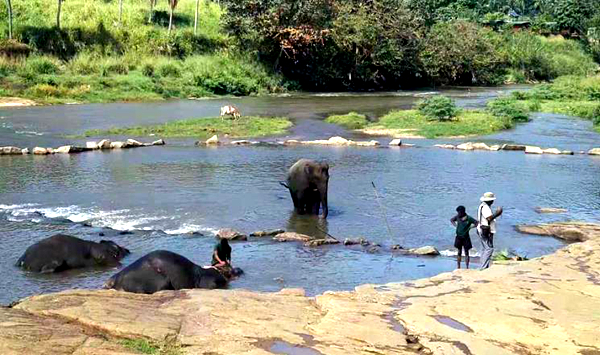
An elephant orphanage in Sri Lanka
To facilitate the cooperation, the China-Sri Lanka Joint Research and Demonstration Center for Water Technology (Water Center) was established in 2016 under the Chinese Academy of Sciences and Sri Lanka’s Ministry of City Planning and Water Supply. Experts in water science, geology, medicine, life sciences and other streams joined the center.
Infrastructure is the foundation of joint research but the infrastructure for water science research in Sri Lanka was fairly weak. Consequently, the Water Center decided to build a water testing laboratory at the University of Peradeniya in Sri Lanka. It was the first water science research project built with Chinese assistance in Sri Lanka.
The Water Center decided to focus on two tasks: providing safe drinking water and carrying out research on the origin of CKDu. In March 2016, its joint expert team presented a program on CKDu origin, prevention and control to Sri Lankan President Maithripala Sirisena, providing scientific and technological support for the presidential CKDu taskforce.
The Water Center also started training professionals to ensure the progress of joint research. So far, it has trained 18 water resource management personnel and 30 medical personnel. It has also mentored nine graduate students, including five PhD candidates.
Rauff Hakeem, Sri Lankan Minister for Urban Planning and Water Supply, has called the Water Center “a symbolic demonstration project of scientific cooperation that has benefited people’s lives”.
Research on CKDu Origin and Treatment
CKDu claims about 1,000 lives in Sri Lanka every year. At present, there are nearly 70,000 patients. The disease doesn’t have any obvious clinical manifestation in the early stage. It can be diagnosed only at an advanced stage. It is accompanied by hypertension and fatigue and the mortality rate is high.
Severe CKDu is the most prevalent among middle-aged male farmers, who are often the main breadwinners of their families. Dialysis, the only available treatment, is costly and regular dialysis means a farming family’s financial collapse. People have seen their relatives, friends or neighbors die soon after falling ill. Some died when they were only in their 30s.
In contrast to the large number of people with CKDu, there are only some 20-plus nephrology specialists in the whole country. Because of the limited number of medical personnel, it is impossible to carry out in-depth and detailed etiological investigation. As a result, many patients cannot get timely and effective treatment.
In order to know more about the origin of CKDu in Sri Lanka, the Water Center took leading nephrology specialists from Peking University First Hospital, Beijing Center for Disease Prevention and Control and related institutions in China to the areas in Sri Lanka with a high incidence of the disease. The experts talked with the local patients to investigate and analyze their situation, including their medical history, family history and living habits. They also collected samples of the local drinking water, soil and main crops to construct a kidney disease monitoring system. The system would provide support for determining the origin of the disease and formulating prevention and control measures.
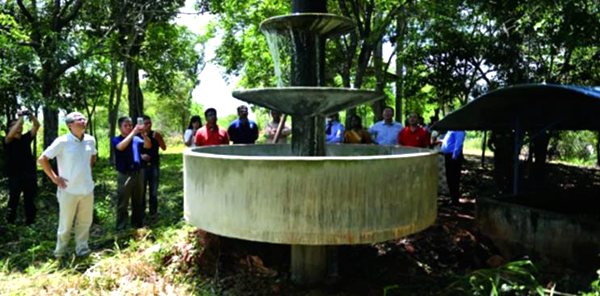
A water supply facility in Anuradhapura
Peking University First Hospital and the Water Center also conducted two training courses on medical skills in kidney diseases. Sri Lankan medical personnel were sent to China for theoretical teaching, case studies and scientific research.
Safe Drinking Water
As a country that receives a lot of rainfall, Sri Lanka is not short of water, but drinking water safety remains a problem that has never been fundamentally solved till now. The Water Center adopted three ways to help Sri Lanka acquire safe drinking water.
The first was to collect and purify rainwater. It had more than 20 sets of rainwater collection and purification devices manufactured by reputed Chinese water resources management companies installed in Anuradhapura and Puttalam, two areas with a high incidence of CKDu.
One of the devices was installed at the Sindas Limasa Primary School. In the past, Ashang, a student at the school, used to bring a heavy bottle of water with him because the groundwater at the school was polluted. But since the installation of the “big green bucket” (the rainwater collection and purification device) by the “Chinese uncles”, the students have safe drinking water after each rainfall. They don’t have to go to school carrying heavy water bottles any more.
The second way was to set up special drinking water stations. Water stations with nanofiltration technology to remove micro impurities were built in some areas in Anuradhapura. Today, they can provide 750 people with about 20 tons of clear drinking water every day. When the water stations opened, the residents held a traditional ceremony to bless them.
The third way was building water purification plants. In Kahatagasdigiliya, the Water Center has built a water treatment plant with electrodialysis technology to provide clean water. The plant can purify 300 tons of water per day, providing 1,500 residents with high-quality drinking water that can be drunk straight from the tap.
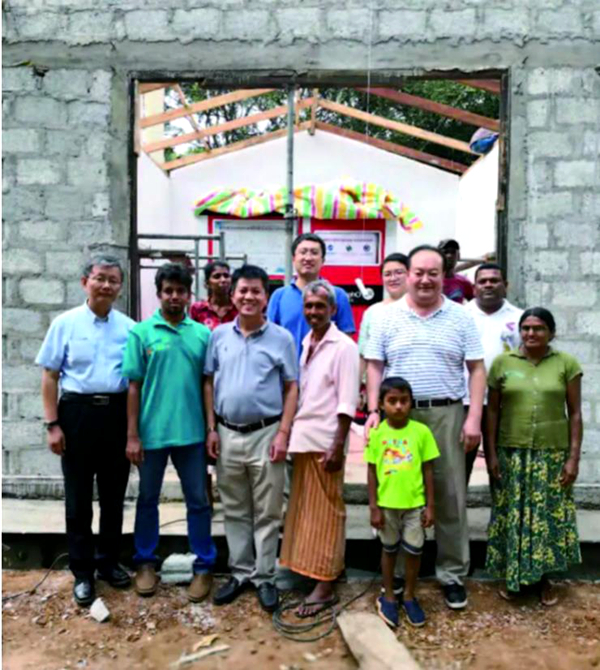
Chinese and Sri Lankan experts at a nanofiltration technology-equipped water station
To have safe water to drink is not a luxury. But for many Sri Lankans, it still remains a dream. The Water Center is now exploring new ways to realize the dream.
The origin of CKDu remains a mystery. Chinese scientists, medical experts and water resources management companies are continuing their efforts to unravel the mystery and improve the health of Sri Lankans.
FOR MORE
Project Overview
In March 2015, the Chinese Academy of Sciences and the Ministry of Urban Planning and Water Supply of Sri Lanka signed a memorandum of understanding in the Great Hall of the People in Beijing to collaborate on research on CKDu and on finding ways to provide safe drinking water in Sri Lanka.
In 2018, with support of the Chinese and Sri Lankan governments, the China-Sri Lanka Joint Research and Demonstration Center for Water Technology used free Chinese assistance to build a state-of-the-art water testing laboratory at the University of Peradeniya in Sri Lanka, laying a foundation for R&D and application of key technologies to conduct research on the origin of CKDu and provide safe drinking water.
So far, the cooperation has resulted in research on CKDu origin, implementing drinking water safety technology, rainwater collection and utilization, and water resources management and planning.


